Search Results for 'Connaught Rangers'
17 results found.
Spacious Renmore family home comes to market with DNG Maxwell Heaslip & Leonard

DNG Maxwell Heaslip & Leonard is the chosen agent for selling this magnificent family home. Renmore, located on the east side of Galway city, is a sought-after location renowned for its proximity to various amenities, and No 11 Renmore Crescent epitomizes convenience and comfort, making it an irresistible prospect for prospective homeowners.
Renmore home with south facing garden for sale
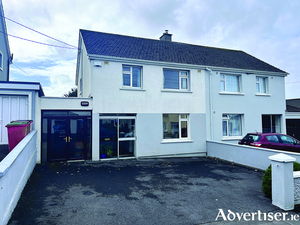
Renmore continues to be one of Galway’s most popular residential areas with its large parks, pitches and play areas all within a welcoming mature residential community boasting all the necessary amenities.
Talk on disbandment of Connaught Rangers
‘Commemorating the armistice, reflecting on disbandment, and looking to the future’ a short talk by Dr Tony King, Connaught Rangers Association Liaison Officer, will be given at Menlo Park Hotel this Sunday November 13 at 4.30pm.
Commemorating the Connaught Rangers mutiny - a century on
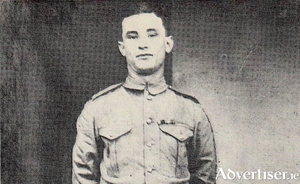
ON SUNDAY June 27 1920, a small group of Connaught Rangers, from C Company of the 1st Battalion, based at Wellington Barracks, Jalandhar, the Punjab, announced they were refusing to obey orders.
Pomp and circumstance, and one unmarked grave
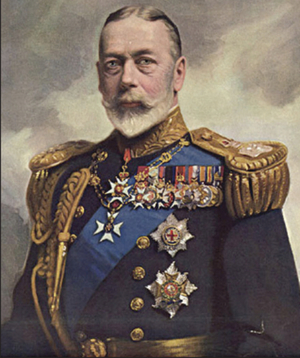
On June 12 1922 a very special ceremony took place at Windsor Castle, near London. Following the establishment of the Irish Free State the previous December, five Irish regiments, including the Connaught Rangers, the Royal Irish, the Leinsters, the Munsters, and the Dublin Fusiliers, which had served the British army with exceptional valour at times, were disbanded. It was a day of special significance for both the participants and onlookers.
Two new recruits for the Connaught Rangers

This very fine painting ‘Listed for the Connaught Rangers, recruiting in Ireland 1878’, was painted by Elizabeth S Thompson, but following her marriage to Lieutenant General Sir William Butler of Bansha Castle, Co Tipperary, is best known as Lady Butler. It is not only extremely unusual for a woman artist to have so successfully worked in the highly masculine field of military art, but Lady Butler was an exception in many ways. She was an innovator, particularly in her sensitive and humane depiction of the ordinary soldier. Detail was all important. She was a regular visitor to Chelsea Hospital, and other retirement homes for soldiers, to question survivors, sometimes getting them to re-enact a particular scene.
‘ When I drop this handkerchief, fire and spare no man’
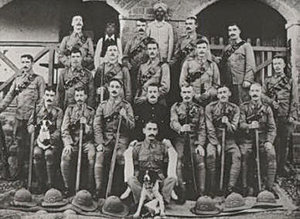
Perhaps fearing that the refusal by Irish soldiers to carry out army duties in Wellington Barracks at Jullundur, northeast India, on June 27 1920; and that the mutiny would spread to an already sympathetic native population, leading to a general protest such as at Amritsar the previous year, the army authorities quickly took decisive action. The commanding officer, Lt Col Leeds, strode into the crowd of excited and rebellious soldiers, demanding to speak to its two leaders John Flannery and Joe Hawes. He warned the men that they could be shot for this; that such behaviour only excited the natives to rebellion. Hawes, smoking a cigarette, replied that he would rather be killed by an Indian bullet than by a British one (His disrespectful attitude to his commanding officer was noted).
Two boys from Loughrea
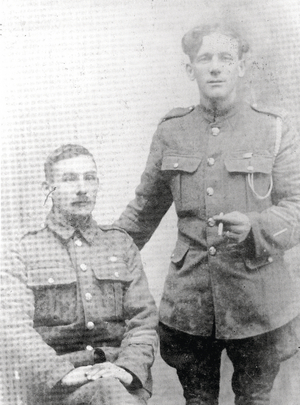
At the beginning of the last century, two boys grew up together in Loughrea. Socially they were far apart, but they were great friends. John Oliver was from a particularly poor background. His family lived in a tiny lean-to shack out on the Galway road on the edge of the town. His friend was Tom Wall, who lived in a comfortable house on Patrick Street. John enjoyed visiting their home. His friend played with a band, The Saharas, and there was often music and fun in their house, shared by his brother Ray, and their attractive sister Cissie.
Renmore Barracks, a brief history

Because of its strategic location, Galway was always an important centre for the military. The original fort in Renmore was known as St Augustine’s Fort and featured prominently in the 1641 rebellion, after which it was abandoned, the purpose for which it had been built having been accomplished.
Exhibition on the Connaught Rangers
The Connaught Rangers, the legendary British Army regiment whose members were drawn from the west of Ireland and who were stationed in Galway, will be subject of a new exhibition.

